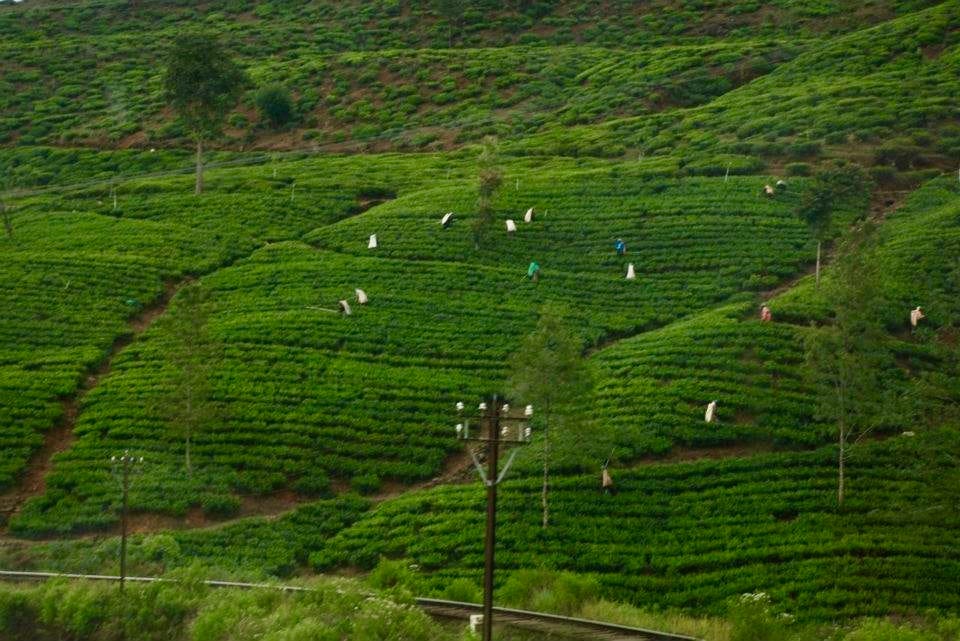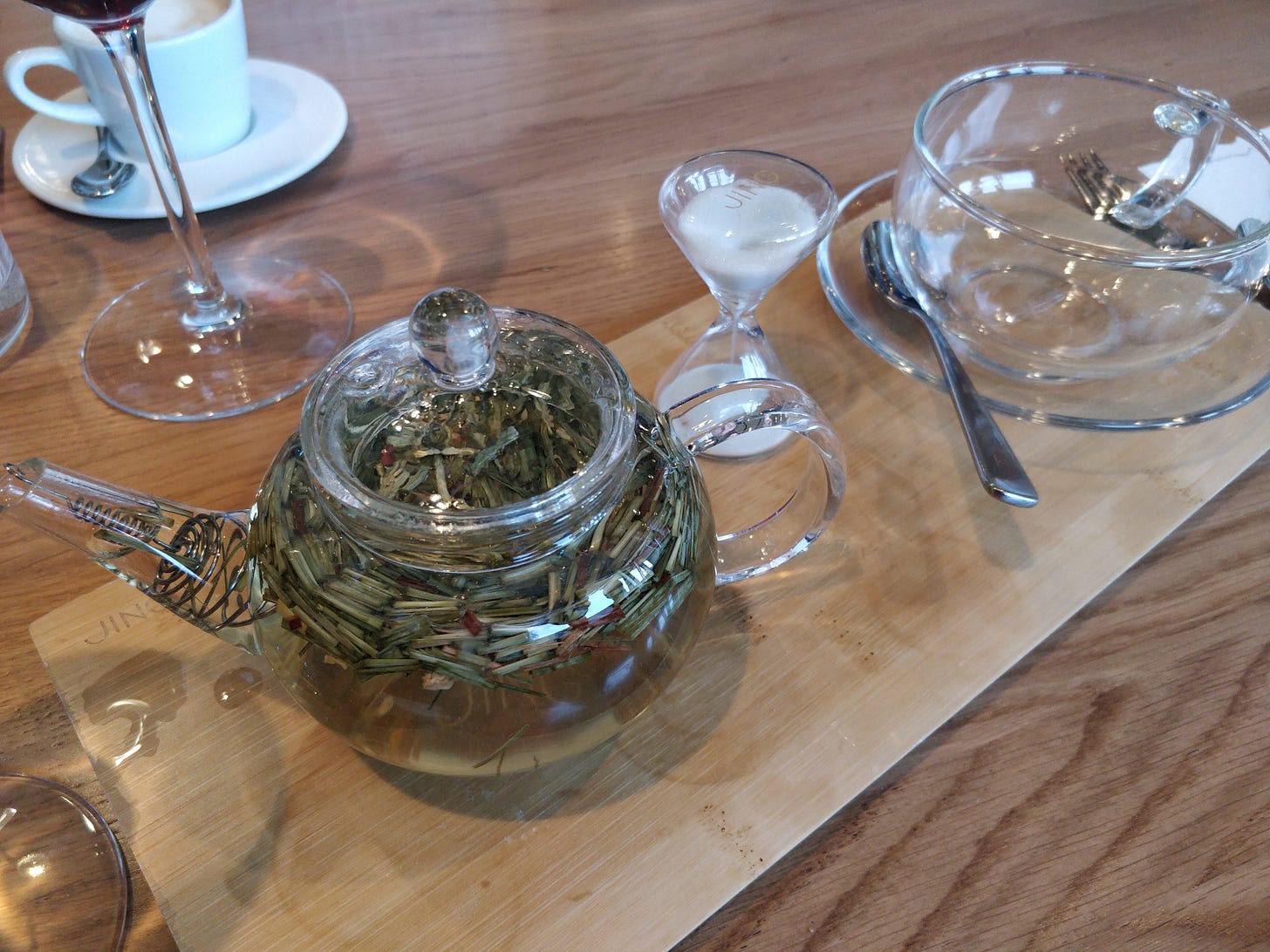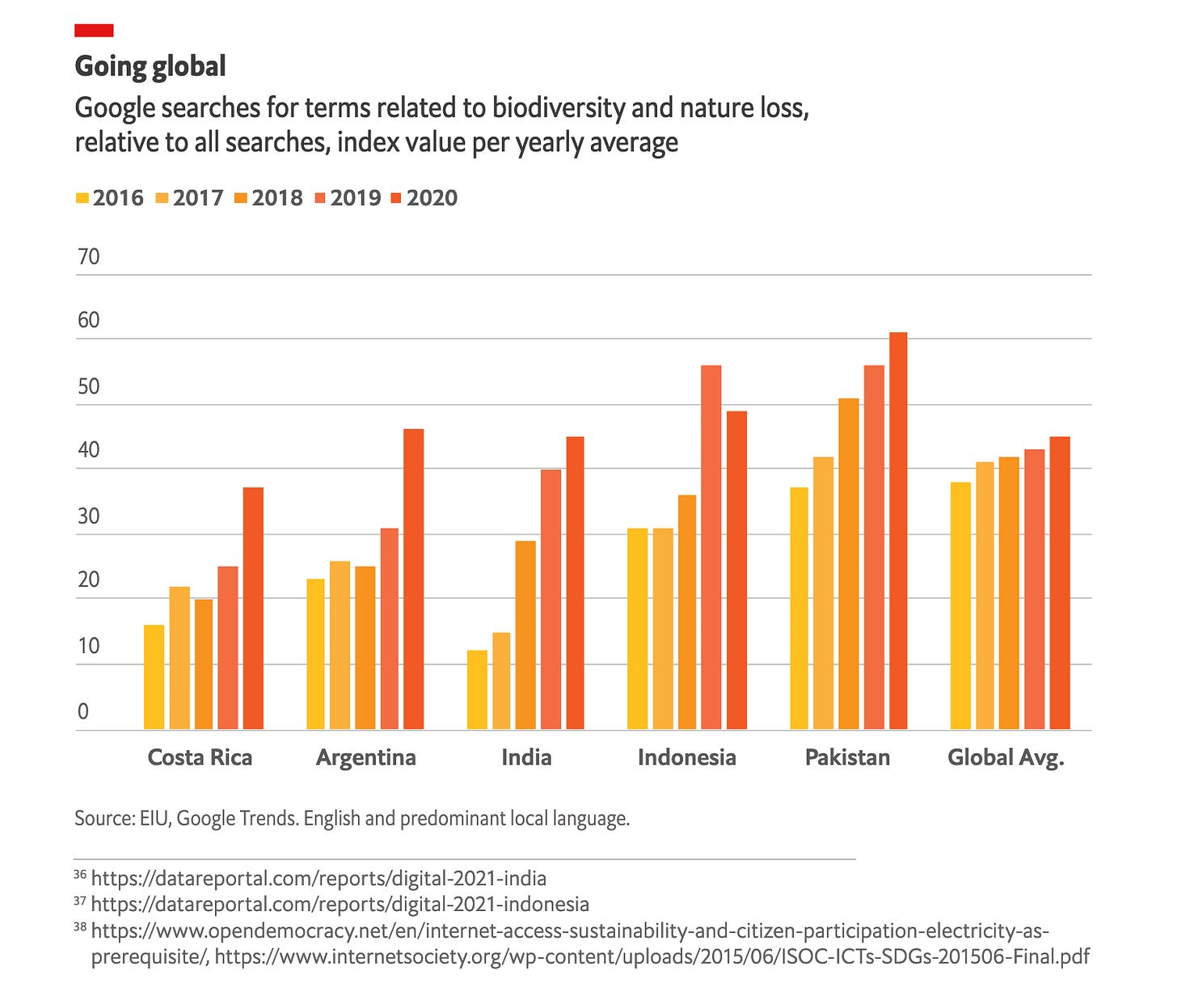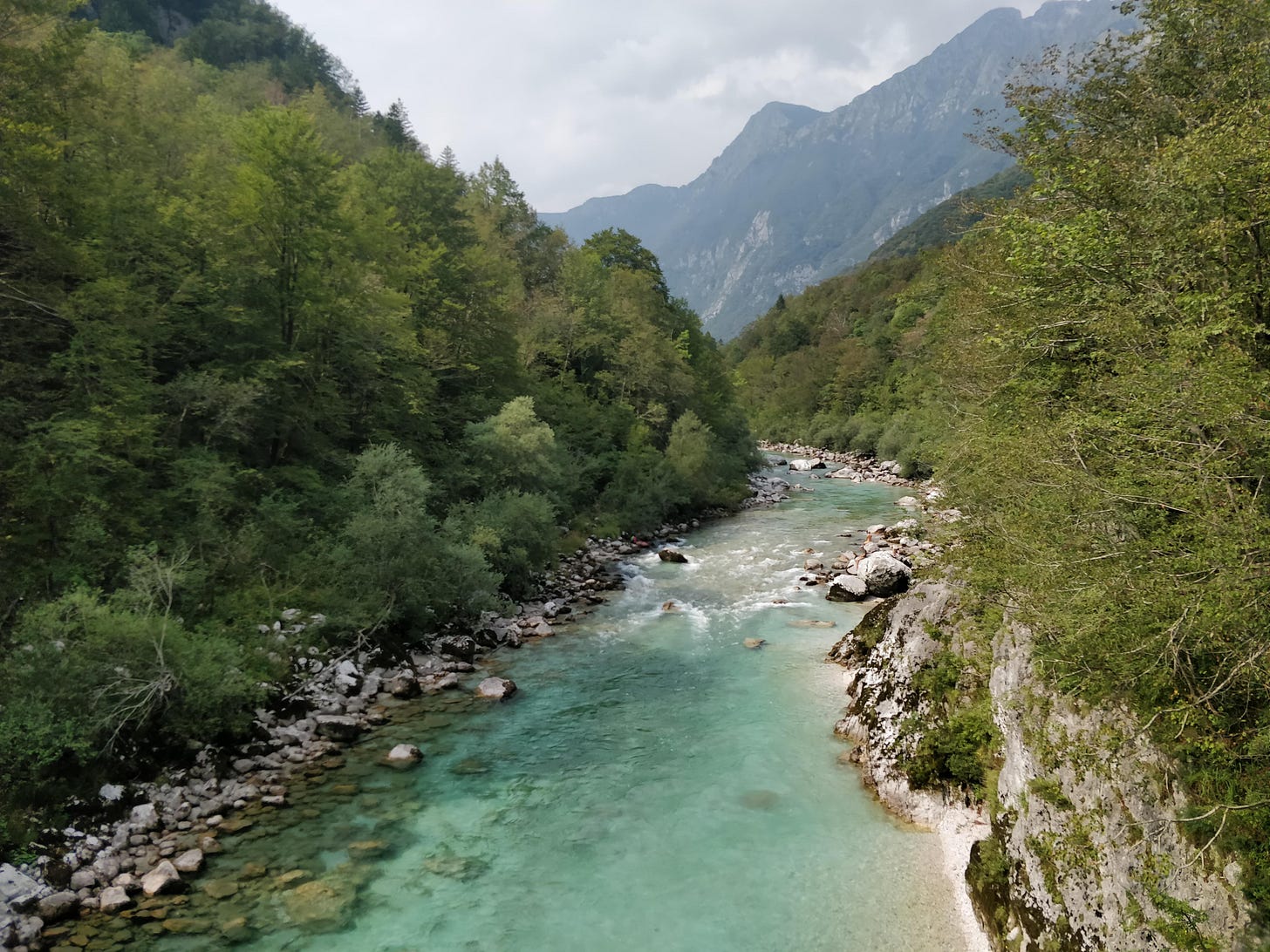What's Brewing?
A newsletter about food systems, climate change and everything connected to them
A cup of tea, of course! Despite living in Rome for nearly four years, I still haven’t gotten into the habit of drinking coffee. I know - I get that look from almost all Italians whenever I tell them I don’t drink coffee.
Tea is my thing and I don’t mean the limp-milky-liquid that seem to pass for tea in some parts of the world. I’m talking about the real kind - freshly brewed, preferably from loose leaves (I’m sorry I’m a tea snob) (or) thick, sweet, frothy tea that is pulled between mugs.
Today (May 21) happens to be International Tea Day, so here are some mostly-fun facts about tea, courtesy of the United Nations and CABI.
Tea is the world’s most consumed drink, after water.
It is believed that tea originated in northeast India, north Myanmar (Represent!) and southwest China, but the exact place where the plant first grew is not known.
There are over 20,000 different teas in the world but only 6 varieties of Camellia sinensis - the actual tea plant.
Da Hong Pao Tea, grown in a few areas of China’s Fujian province is apparently the most expensive tea in the world, with a “distinctive woody flavour”. A few years ago, a mere 20 grams sold for over $30,000 at an auction, according to the FT. Read more here on other super-expensive teas including one where panda dung was used as a fertiliser.
The top 5 tea producers in the world are China (43%), India (22%), Kenya (8%), Sri Lanka (5%) and Turkey (5%) according to this 2018 document from the Intergovernmental Group on Tea under the FAO, the U.N. food and agri agency. But others say Vietnam is now in the 5th spot behind Sri Lanka.
In terms of consumption, Turkish people consume 4 kilos of tea per person per year, nearly double that of second-place Libya (around 2.2 kilos), followed by Morocco, Ireland and the UK.
75% of all teas produced globally are consumed locally.
Last year, lockdowns and COVID-19-related restrictions affected the global tea trade, but the FAO says in some places, higher consumption of tea at home more than made up for declining consumption elsewhere.
Apparently in-home tea sales surged by 75% in the first weeks of lockdown in some countries.
About 9 million smallholder farmers in the four top producing countries rely on tea for their livelihoods.
Tea can only be produced in narrowly defined agro-ecological conditions so is highly vulnerable to climate change (Sorry, it’s impossible to ignore climate change!). Changes in temperature and rainfall patterns are already affecting yields, tea product quality and prices.
It was only in December 2019 that the U.N. General Assembly decided to designate May 21 as International Tea Day. What took them so long?
The Digital “Eco-Wakening”
Public interest in and concern for nature has risen in the past five years (2016 - 2020) and continues to grow during the COVID-19 pandemic, according to new research commissioned by the WWF and conducted by the Economist Intelligence Unit (EIU).
The most apparent is in the digital world. For example, the number of posts related to loss of nature and biodiversity saw a 65% rise on Twitter alone, from 30m to 50m, between 2016 to 2019. The increase was particularly striking in emerging markets - 38% across Asia, 53% in Sub-Saharan Africa and 136% in Latin America.
Analysis using Google Trends also shows a 16% increase in the popularity of google searches around biodiversity and nature loss, with most growth in Asia and Latin America, the authors said.
With more and more customers showing interest in voting with their wallets, the number of businesses who have pledged to sourcing practices that protect biodiversity has increased, for instance, by 45% in the food, cosmetics and natural pharmaceutical industries, according to WWF.
Perhaps it’s not surprising people are more interested in these issues, particularly in light of COVID-19 pandemic and the heightened awareness around how destruction of nature facilitates the spread of zoonotic diseases. These are diseases that pass from an animal to a human. Examples include Ebola, MERS, West Nile fever, Zika, and SARS.
Still, the rise in concerns over these issues predate the current global pandemic which is encouraging, but I also hope this ‘eco-wakening’ goes beyond digital and enters the real world.
Full report is here but you could get the main findings here.
Bees and trees and all of these…
The WWF report was published a few days before the International Day for Biological Diversity on May 22.
Another day? Yes, I hear you, but it gives all of us, including me, a chance to emphasise again the importance of these issues. I will admit there seems to be a glut of them in late May though, because May 20 is World Bee Day, which I’ll come to later.
Biodiversity (short form for biological diversity) is all the things that give us life and keep us alive - all the plants, animals and microorganisms that provide us with the food to eat, the water to drink, and the shelter and the medicine to keep us warm and healthy.
Biodiversity also includes genetic differences within crops and livestock and the variety of ecosystems, and this year’s theme for the Biological Diversity day is “We’re part of the solution” which is an obvious but perhaps necessary point, because here’s where this newsletter takes a more sober turn.
According to this latest study by an international team of scientists and researchers, human-driven decline of biodiversity in freshwater ecosystems will require millions of years of recovery.
The research team “gathered a large dataset containing 3,387 fossil and living snail species of Europe covering the past 200 million years” and found “present extinction rates in European freshwater gastropods are three orders of magnitude higher” than during the time the dinosaurs went extinct.
“The pace at which we lose species today is unprecedented and has not even been reached during major extinction crises in the past,” they warned.
And it gets worse.
“Already by 2120 a third of the living freshwater species may have vanished.”
"Even if our impact on the world's biota stops today, the extinction rate will likely stay high for an extended period of time," Dr. Thomas A. Neubauer, the lead author of the study, said in a press release.
"Despite our short existence on Earth, we have assured that the effects of our actions will outlast us by millions of years."
In a double whammy, another new study from the University College London (UCL) said intensive agriculture could cause the decline of important pollinators, in particular bees and butterflies.
The UCL folks used a database covering 303 studies, 12,170 sites (primarily across North and South America, Europe, and Africa), and 4,502 pollinating species, including insects, birds and bats to model the effect of land-use type and intensity on global pollinator biodiversity.
They found that “overall, low levels of land use intensity appear to have beneficial effects for pollinators, even compared to natural vegetation, while increasing intensity of different land uses was associated with reductions in species richness (the number of different species) and total abundance.”
They also found that pollinators in tropical regions are the most likely to decline.
Why should we care? Well… let me end this newsletter with some interesting facts on pollinators.
More than 75% of globally important food crops, including fruits, vegetables, coffee, cocoa and almonds, are at least partially reliant on animal pollination.
While pollination can also be carried out by vertebrates like bats, birds, primates, marsupials, rodents and reptiles, in practice insects are responsible for almost all pollination, according to Slow Food.
Bees are the most famous pollinators, but many other insects are also important, like wasps, butterflies, moths, beetles, ants and flies.
An estimated 5-8% of current global crop production is directly attributable to animal pollination, experts said. This amounts to an annual market value of $235 billion-$577 billion worldwide.
Wild pollinators have declined in occurrence and diversity (and abundance for certain species) at local and regional scales in North West Europe and North America.
I’m now going to go brew a jug of tea and think happy thoughts.
As always, have a great weekend! Please feel free to share this post and send tips and thoughts on twitter @thinink, to my LinkedIn page or via e-mail thin@thin-ink.net.








